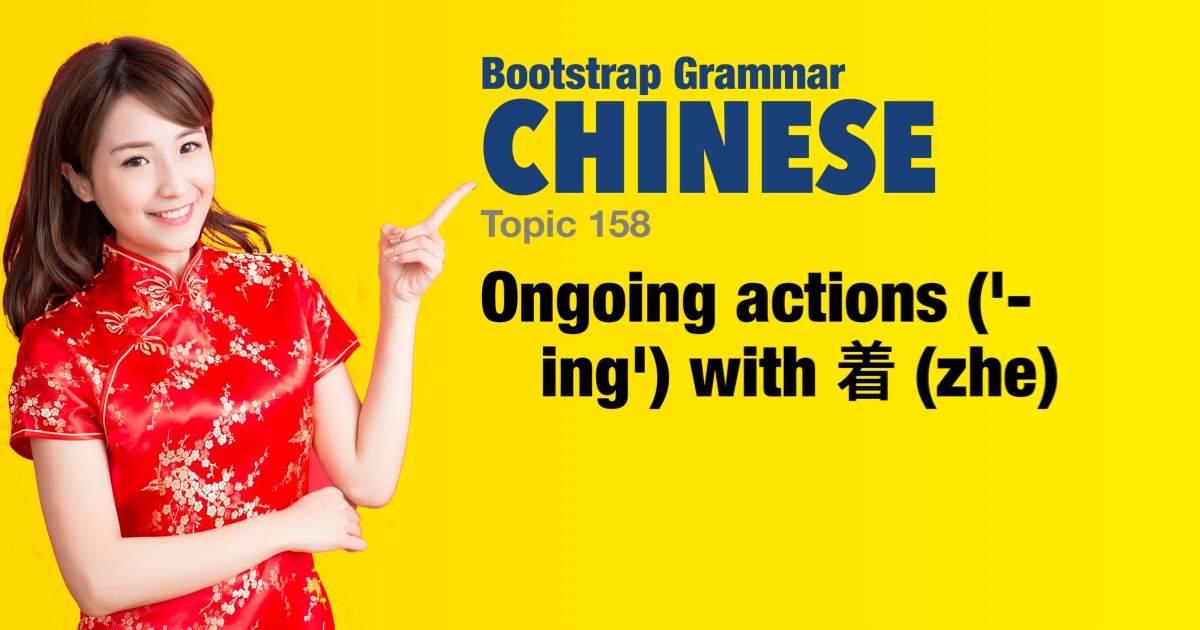Chinese grammar - Ongoing actions ('-ing') with 着 (zhe) |
|||
|
|||
In Chinese, the particle 着 (zhe) indicates a continuous or ongoing action or state. It is similar to the English present participle '-ing' but is also used to indicate states in the past. 着 should appear immediately after the verb. |
| Examples: | |
|
她安静地坐着。
tā ānjìng de zuò zhe. She is sitting quietly. |
|
|
他安静地看着书。
tā ānjìng de kàn zhe shū. He is reading a book quietly. |
|
|
她快乐地听着音乐。
tā kuàilè de tīng zhe yīnyuè. She is happily listening to music. |
|
|
孩子们兴奋地玩着游戏。
háizimen xīngfèn de wán zhe yóuxì. The children are excitedly playing games.
|
|
|
我等着公交车。
wǒ děng zhe gōngjiāochē. I am waiting for the bus. |
|
|
我认真地写着作业。
wǒ rènzhēn de xiě zhe zuòyè. I am seriously doing homework. |
|
|
他开着车。
tā kāi zhe chē. He is driving. |
|
|
猫舒服地躺着睡觉。
māo shūfu de tǎng zhe shuìjiào. The cat is lying down sleeping comfortably.
|
|
|
他们大声地唱着歌。
tāmen dàshēng de chàng zhe gē. They are singing loudly. |
|
|
老师认真地讲着课。
lǎoshī rènzhēn de jiǎng zhe kè. The teacher is lecturing seriously. |
|
|
她拿着花。
tā ná zhe huā. She is holding flowers. |
|
|
我们慢慢地跑着步。
wǒmen mànmàn de pǎo zhe bù. We are running slowly.
|
|
|
他做着饭。
tā zuò zhe fàn. He is cooking. |
|
|
他们看着电视。
tāmen kàn zhe diànshì. They are watching TV. |
|
|
她专心地听着讲座。
tā zhuānxīn de tīng zhe jiǎngzuò. She is attentively listening to the lecture.
|
|
|
我们在公园里散着步。
wǒmen zài gōngyuán lǐ sàn zhe bù. We are strolling in the park.
|
|
|
他带着眼镜看书。
tā dài zhe yǎnjìng kànshū. He is reading with glasses on.
|
|
|
孩子们开心地画着画。
háizimen kāixīn de huà zhe huà. The children are happily drawing pictures. |
|
 |
|



